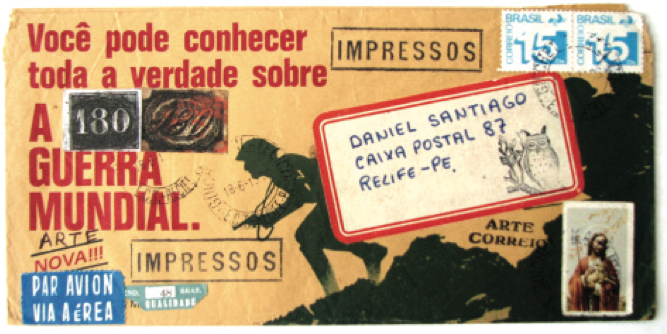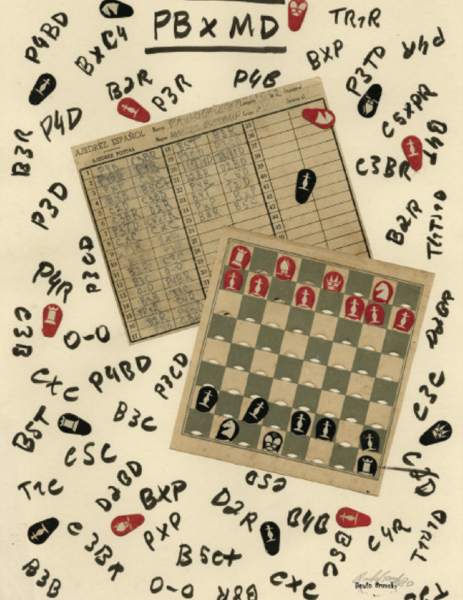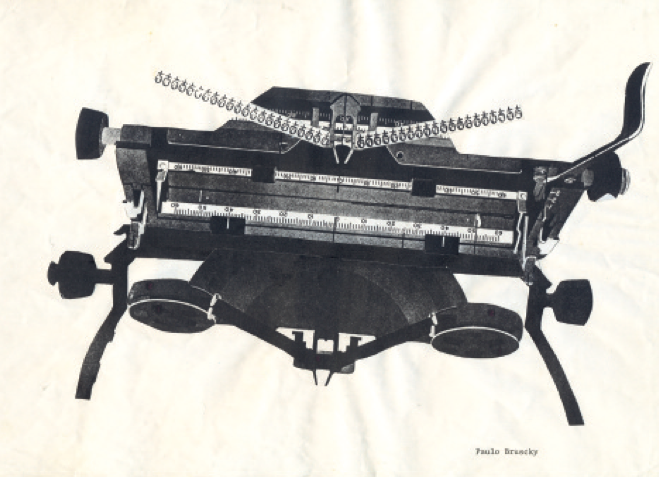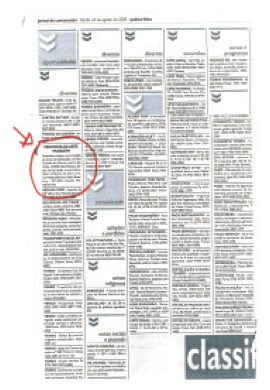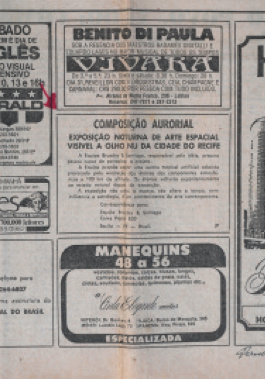Paulo Bruscky
In Praise of the Fleeting
Paulo Bruscky was jailed and interrogated several times during the military regime that dominated Brazil as of 1964. On one of those occasions, “a federal agent said:’Then, if I tear out a piece from that floor and place it on the wall, is that art?’ I replied: ‘If you place it, it isn ́t. If I place it, then it is art’”.
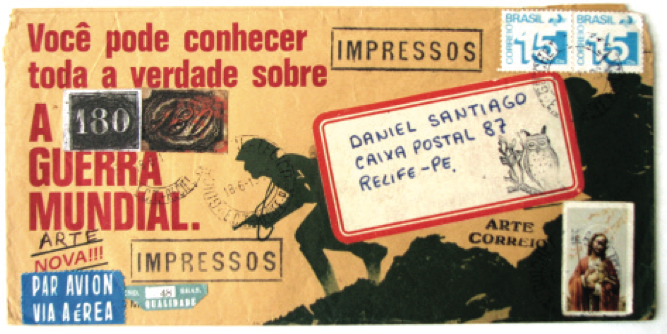
The anecdote serves quite well to introduce the work of one of the most prolific and original Brazilian artists of the second half of the 20th century, since it reveals in an unequivocal way the profound irony, the constant socio-political commitment, the brave and unshakable coherence of one of the pioneers of Conceptual Art in Brazil. Bruscky was born in 1949 in Recife, Pernanbuco state, in northern Brazil, a city with great traditions but quite decentralized in relation to the Rio de Janeiro-Sao Paulo axis which concentrates the great majority of artists, critics, art institutions and galleries. Despite − or perhaps precisely as a result of −this apparent marginality, and despite his having initiated his career during the most oppressive years of the Brazilian dictatorship, Bruscky managed to create a body of work fully attuned to the trends of the time through his emphasis on the conceptual or the basically projectual aspect, the character of pure potency, of the work of art. In fact, his earliest exhibitions were held in1966-67, that is, exactly the same period in which the US critic, Lucy Lippard, situates the beginning of the process of dematerialization of the art object in her classic, Six Years.
In recent years, Bruscky’s work has been massively rediscovered both in Brazil and in other countries, through the publication of a number of monographs, through his participation in important events (Sao Paulo and Havana biennials, among others), and through the staging of great solo shows, such as the one that is scheduled to take place at the Valencian Institute of Modern Art (IVAM) in 2011. But this interest on the part of art critics and the art market is, however, quite new: because of the ephemeral nature and the intangibility of a large part of his production, many of Paulo Bruscky’s most radical actions and experimentations remained practically unknown for many years. In this respect, it might be said that his trajectory exemplifies and represents a synthesis of the Weltanschauung (mystical contemplation) of the conceptual artist, who apparently has little interest in obtaining recognition from institutions or from the market.
Over the course of a career covering more than four decades, Bruscky never ceased to experiment and innovate: he employed photocopiers, blueprint machines and duplicating machines, besides stamps and postmark devices; he utilized medical equipment from the Agamenon Magalhães Hospital, where he worked for several years, producing among other works the artist’s book O meu cérebro desenha assim (1976), inspired by a series of encephalograms; he organized the first Mail Art exhibit (1976, closed by the police) and the first Street Art exhibition (1981) in Brazil, both of them in Recife; he also created sound works, among them a Ra(u)dio Art Show, which was broadcasted live on a mainstream radio station. He also conceived innumerable more or less utopian projects, such as the one that transformed the city of Recife into a group exhibition (comprised of works like A Avenida Guarapés à noite; A madrugada na Avenida Conde da Boa Vista, etc...), or the extraordinary Cinema de Inversão/Invenção (1982), which advocated the transformation of the space between the sleepers in a railroad track into retro illuminated stills in a film that would be shot from inside a train in motion, in order to achieve an impression of movement.
Bruscky was also among the first to practice Mail Art in Brazil on a regular basis, resorting for artistic purposes to letters, postcards he himself created and manipulated, and even faxes at the time when they had just been introduced in the country. As a mail artist, Bruscky joined an extremely dynamic and active international network, and he exhibited quite regularly abroad, besides establishing contacts with members of groups like the Gutai and Fluxus groups, whose poetics exerted an evident influence on his work. In Brazil, the Museum of Contemporary Art of the University of Sao Paulo, directed by Walter Zanini between 1963 and 1978, became a fundamental reference point for Bruscky and for several other artists, and different Mail Art exhibitions were organized despite the surveillance of the regime, very diffident with regard to a production which was so intangible, and which in fact often succeeded in evading censorship. In those years, other initiatives had to be interrupted: the poetic and inventive advertisements that Bruscky had been creating since 1977 in collaboration with artist Daniel Santiago for publication in different newspapers in Recife and other Brazilian cities, for instance, had to be suspended because the newspapers themselves refused to continue publishing them. The advertisement featuring a hose to ‘put out’ words (“use what you wish and put out what you are not interested in”) or of an Auroral Composition (“The Bruscky- Santiago team proposes the exhibition of a colourful, artificial, tropical aurora produced by the excitement of the atoms of atmospheric components at an altitude of 100 kilometers...”) could not fail to attract the distrustful gaze of the dictatorial regime. As of the 1990s, Bruscky expanded his production of small objects or visual poems, with a special focus on a significant series of artists’ books, in many cases simple boxes resembling books, adorned with phrases consisting of ironic and caustic plays on words.
In 2004, Bruscky was invited to participate in the 26th Sao Paulo Biennial, featuring a collection of works − his studio − which was transported from Recife and re-constructed in the Biennial’s pavilion. Through this relocation, the German curator, Alfons Hug, ratified the importance of the artist’s archive, highlighting, by the way, the apparent contradiction in an oeuvre that, in spite of what critics consider an ontological immateriality, demands to be appreciated in its physicality. The way in which Bruscky’s mail artworks (but not ‘merely’ mail artworks) and those of his countless international correspondents occupied every bit of space in the artist’s studio rendered the network of relationships, exchange, controversies and fights established since the days in Recife and along several decades tangible, ultimately proving Bruscky’s persistence and the relevance of his work during this period which was so decisive in the recent history of the country.
Profile :
Paulo Bruscky is a Brazilian artist based in Recife, who turned towards avant-garde actions and experimentalism in the 1970s. In 1981, he was awarded a Guggenheim Fellowship in the field of the Visual Arts. A pioneer of Mail Art and Copy Art in Brazil, he has also developed projects involving performance, installations, video and multimedia languages. He is represented by Nara Roesler Gallery.

